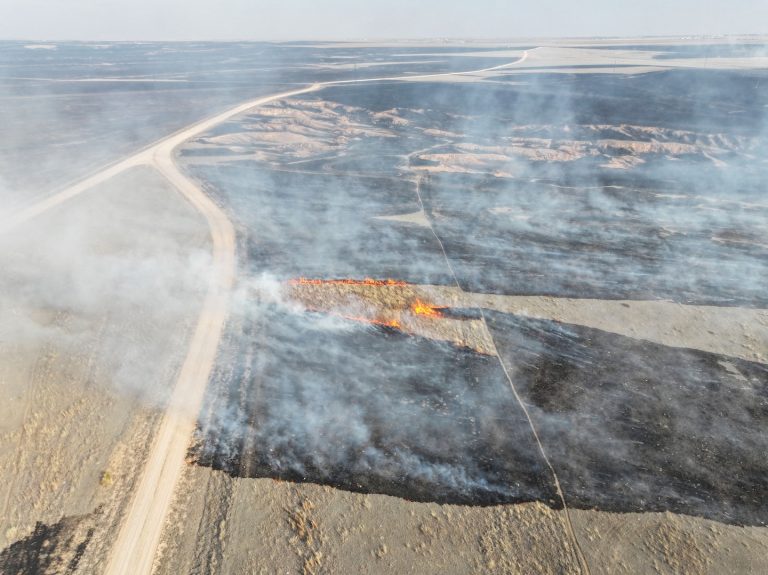The Associated Press reported that the fires killed one person, an 83-year-old woman, in the town of Stinnett, Texas. In Hemphill County, which includes the Canadian city, no one was reported missing, the Canadian Record posted on Facebook.
Despite cold temperatures and incoming snow, firefighters were battling at least one building fire and power lines caught fire early Thursday, the Record reported. The Smokehouse Creek Fire burned in the Canadian region northeast of Amarillo on Tuesday and Wednesday, and by Thursday morning remained 3 percent contained, the Forest Service said.
Snow fell as of 9 a.m. Central time in Amarillo and in Borger, 40 miles to the northeast, where the Smokehouse Creek Fire ignited Monday and other fires are still burning, the National Weather Service reported. The Windy Deuce Fire west of Borger has burned 142,000 acres and was 30 percent contained early Thursday.
The Smokehouse Creek Fire has surpassed the largest recorded wildfire in Texas, the East Amarillo Complex. This fire killed ten people and burned more than 907,000 acres in March 2006.
The abnormal winter heat that fed Smokehouse Creek had set records across the Lone Star State, along with strong winds as a cold front approached in recent days. Temperatures soared into the 80s and 90s across the state early this week, including a high of 82 degrees in Amarillo on Monday.
Although conditions were less favorable for fires by Thursday, with temperatures reaching into the 30s across the Panhandle, forecasters said that if the fires are not contained or extinguished soon, they are expected to become more difficult to fight by Saturday.
“Critical fire-related weather conditions are expected to develop across the region again on Saturday and Sunday,” meteorologists wrote. Southwest winds are expected to reach 30 mph, with stronger gusts, and relative humidity values could drop to 10 percent, they said, further drying out vegetation.
The Forest Service on Wednesday raised the state's wildfire warning system to level three on a five-step scale, indicating that wildfire activity is high and that help from multiple regions or states may be needed.

